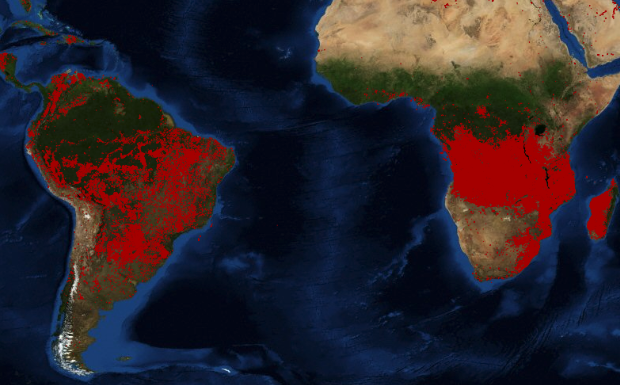Data from NASA’s Fire Information for Resources Management System (FIRMS) shows that more fires are burning in central Africa than in the Amazon Rainforest currently.

Image: NASA’s Fire Information for Resources Management System
The data shows that 6,902 fires are burning in Angola and 3,395 in the Democratic Republic of Congo.
According to The Independent, the extent of the fires affecting forest areas is uncertain, however, in agricultural areas fires are lit on purpose for soil regeneration. This practice while risky, is essential for improving soil quality to benefit the farming communities.
CNN reiterates this in saying that more fires does not mean the situation is more devastating than the Amazon. The satellite data does not indicate the cause and type of fire. Brush fires, controlled fires and forest fires all appear the same on the map.
According to The Conversation, the fires currently burning are in grassland areas, which is normal this time of year. Farmers start the fires for management of the areas where their animals feed. In addition to soil regeneration, the fires are started to control parasitic ticks or to manage thorny scrub growth.
The fires are a crucial part of land management.
Also read: R335 million released to put out Amazon Rainforest fires.
Concerns however, are being fuelled by the fact that the lack of grasslands means more forests areas are burnt down, which could speed up the rate of deforestation in central Africa.
On Monday 26 August the G7 countries announced, on the final day of the 45th summit, that $22-million or R335-million would go toward putting out the fires in the Amazon.
However, on Tuesday 27 August, a representative of Brazilian President Jair Bolsonaro told CNN that Brazil would be turning down the money.
The country has subsequently changed its tune in saying that it will take the aid, so long as the Brazilian government is able to distribute the funds. This was confirmed by presidential spokesperson Otavio Rego Barros.















